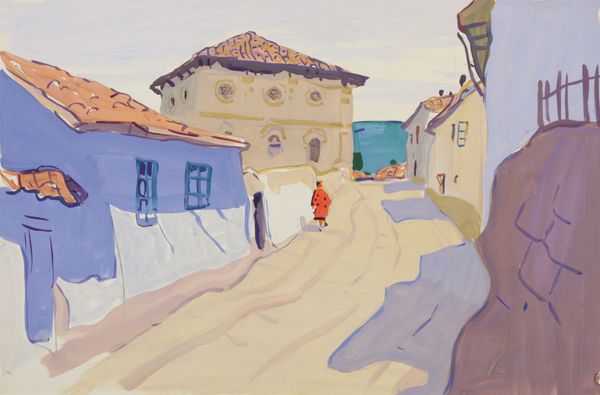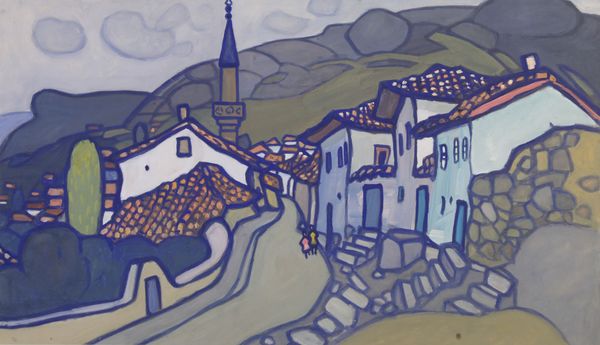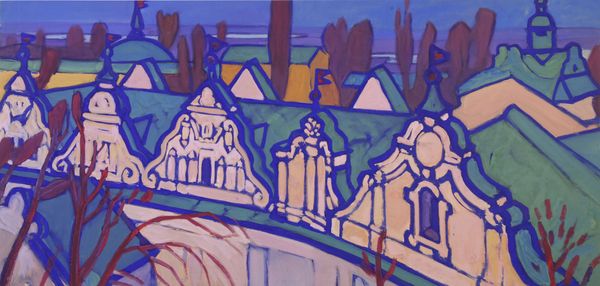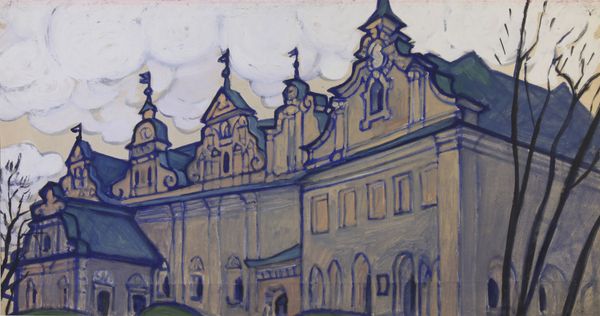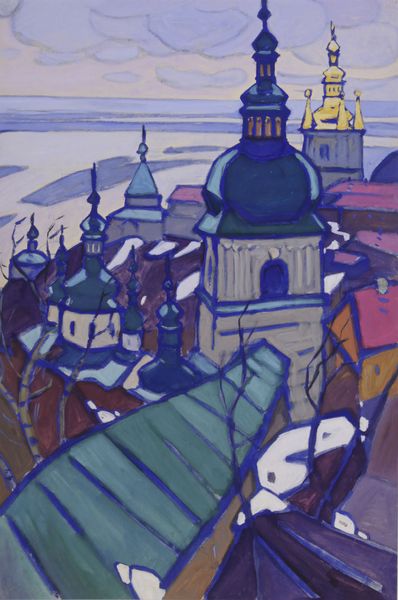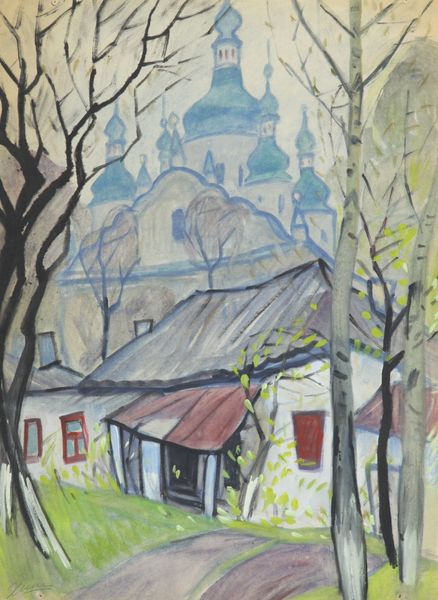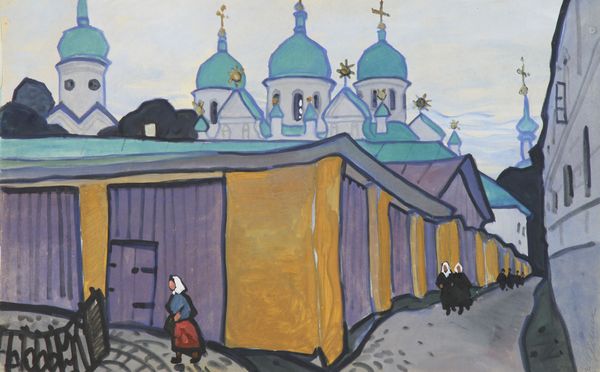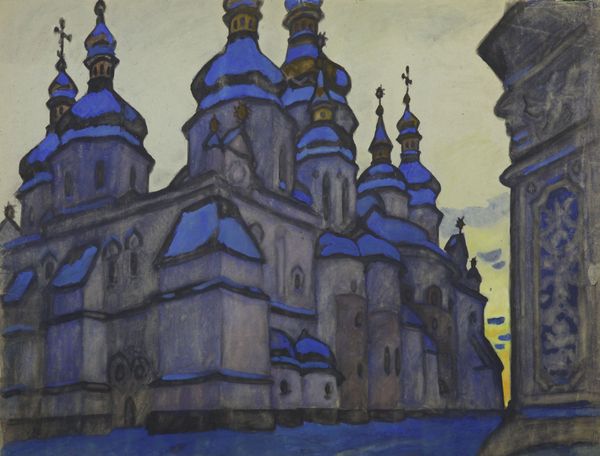
painting, watercolor, architecture
#
painting
#
landscape
#
soviet-nonconformist-art
#
figuration
#
watercolor
#
cityscape
#
architecture
#
building
Dimensions: 40 x 60 cm
Copyright: Yuriy Khymych,Fair Use
Curator: Here we have Yuriy Khymych's "Purple and violet. Bakhchisarai, Khan's Palace," a watercolor painting dating to 1962. Editor: The limited palette really sets a contemplative, almost melancholic mood. The dominance of purple and violet is striking. Curator: It’s interesting that you mention the color choice. Considering it’s a watercolor piece created during the Soviet era, the very choice of materials and style departs from the prescribed Socialist Realism. The flattened perspective, the reduction of detail…it speaks to a quiet form of resistance. Editor: Absolutely, and thinking about the institutional context, presenting such a personal, abstracted view of a historically charged site – the Khan’s Palace in Bakhchisarai – is quite significant. The Palace itself carries layers of cultural and political weight, having been both a symbol of Crimean Tatar power and later a site appropriated into the Russian, and then Soviet, narrative. Curator: It’s about the intersection of material reality and symbolic representation. Khymych uses a humble, easily accessible medium like watercolor to depict something grand and historically loaded, almost making the viewer think about the value associated with the painting. Watercolor suggests quick impressions, immediacy of expression, rather than permanence, doesn’t it? Editor: Yes, precisely! The visible brushstrokes, the way the colors bleed slightly... they remind us of the artist's hand, of the process itself, almost laid bare. And that connects to how art functioned in Soviet society—controlled, manufactured, promoted…here, the creation process and consumption of the artwork become very intimate. Curator: Given the political constraints around artistic production at that time, viewing and acquiring art like this became a kind of cultural act for art lovers. The subject choice, though seemingly neutral—architecture—becomes inherently political under a Soviet lens, and this kind of cityscape allowed for quiet dissent. Editor: That’s an important point to reflect upon. It illustrates how art objects—and the artistic decisions inherent in their production—transcend aesthetic contemplation. Instead, they become charged with a powerful symbolic language related to both production and access. Curator: Indeed. Examining art in these moments reveals far more than its surface appearance. Editor: It encourages us to look beyond what we see and ask about the where, the when, and the who involved in shaping what we are looking at.
Comments
No comments
Be the first to comment and join the conversation on the ultimate creative platform.

